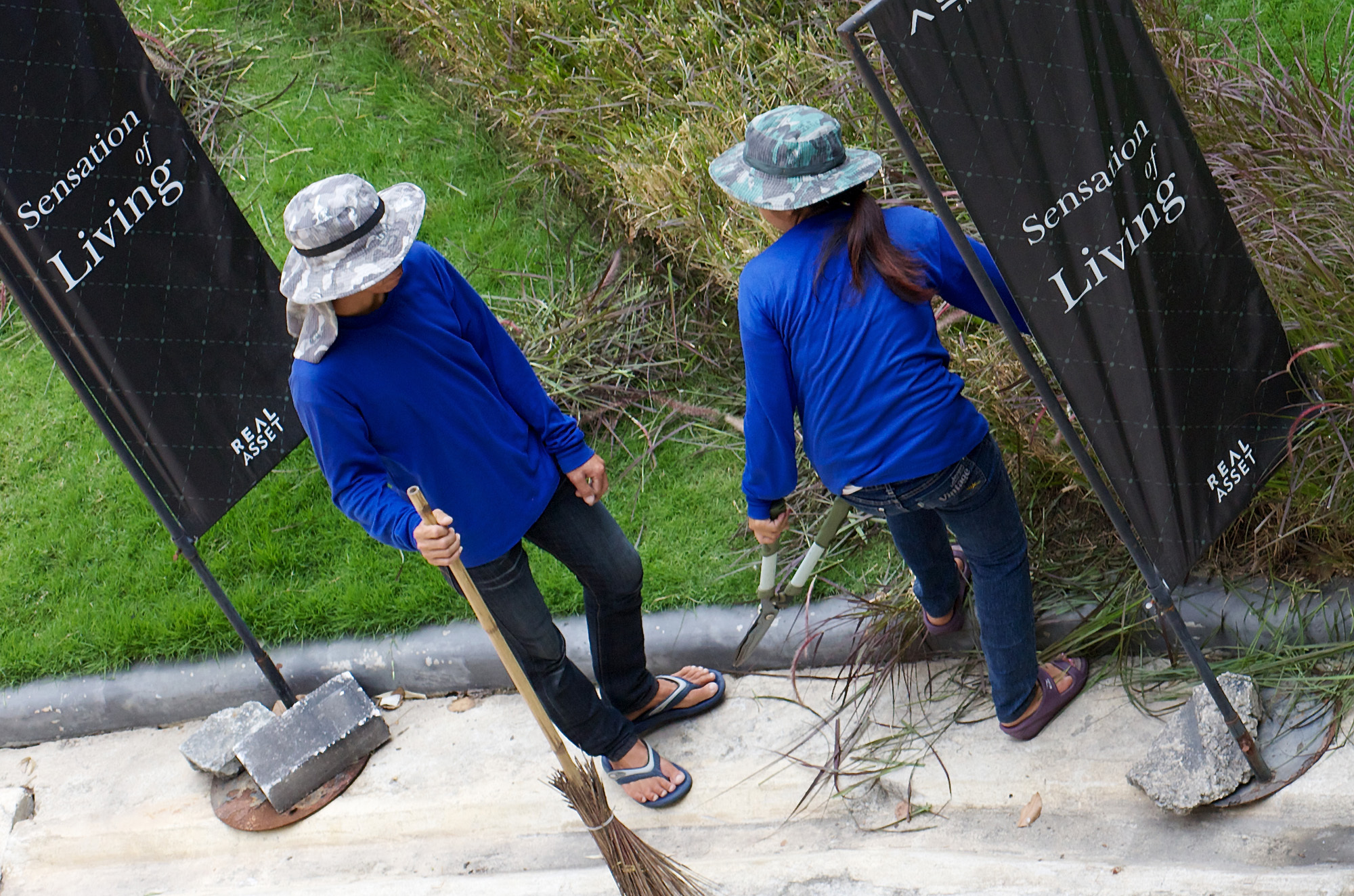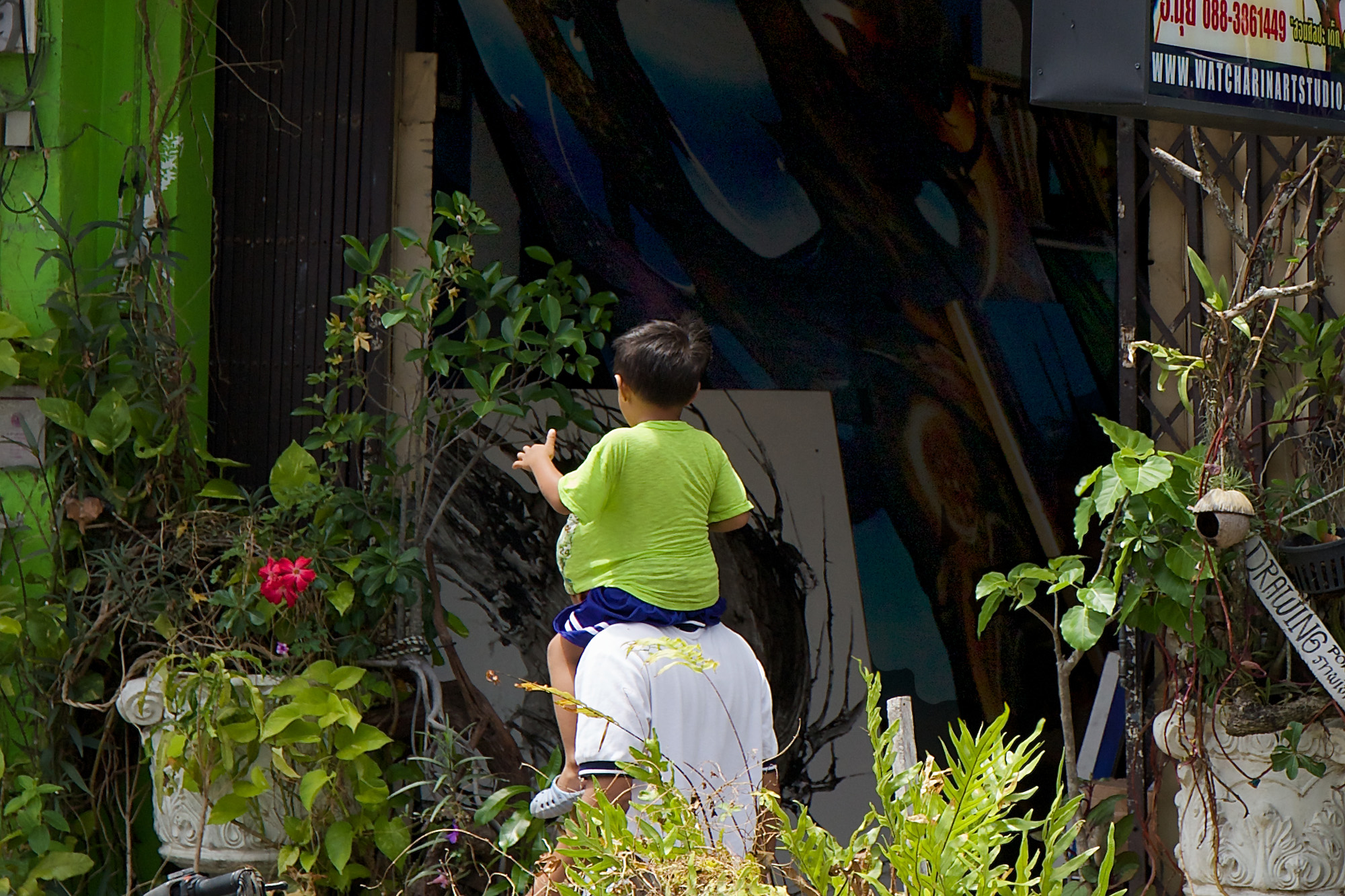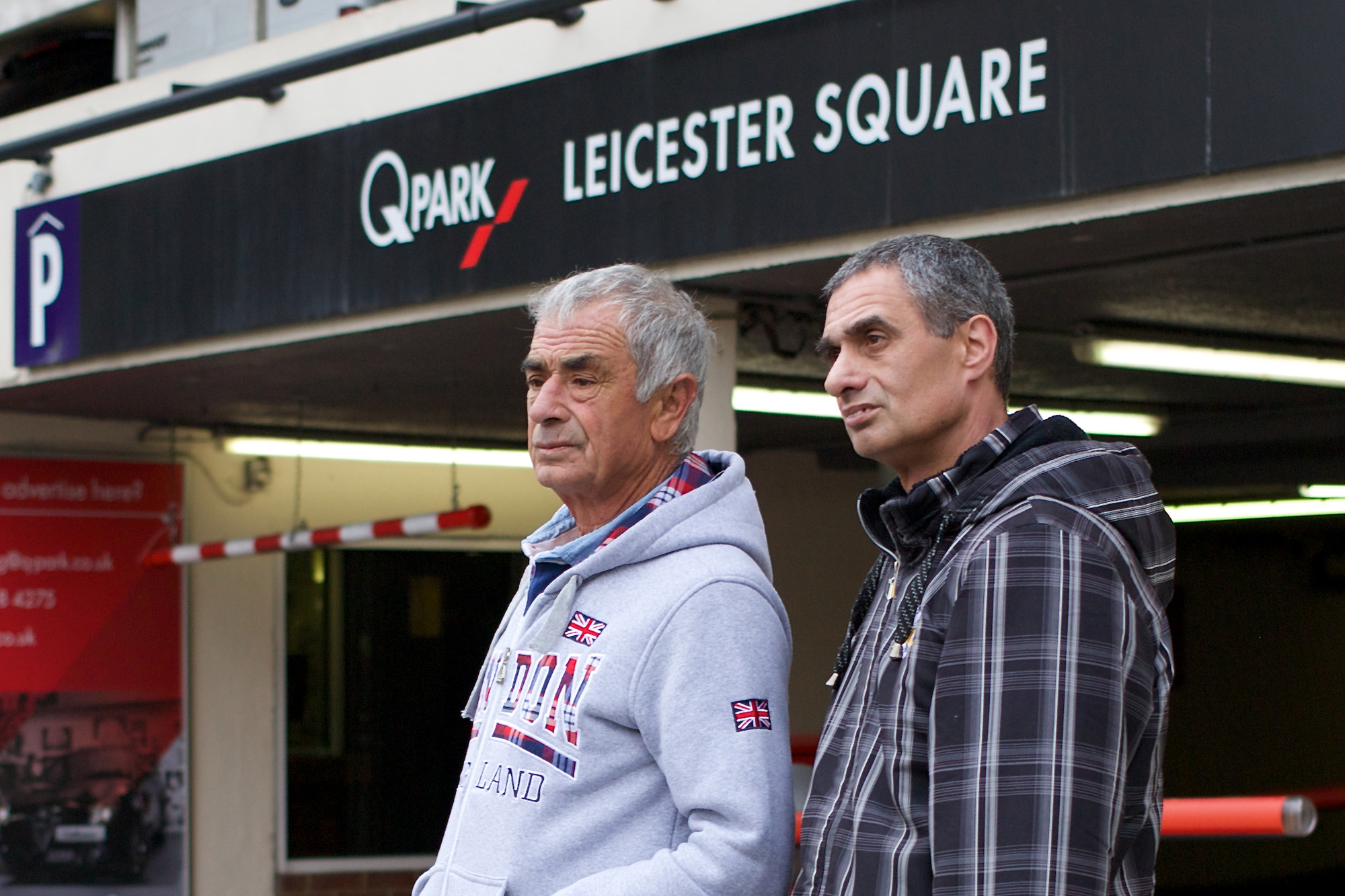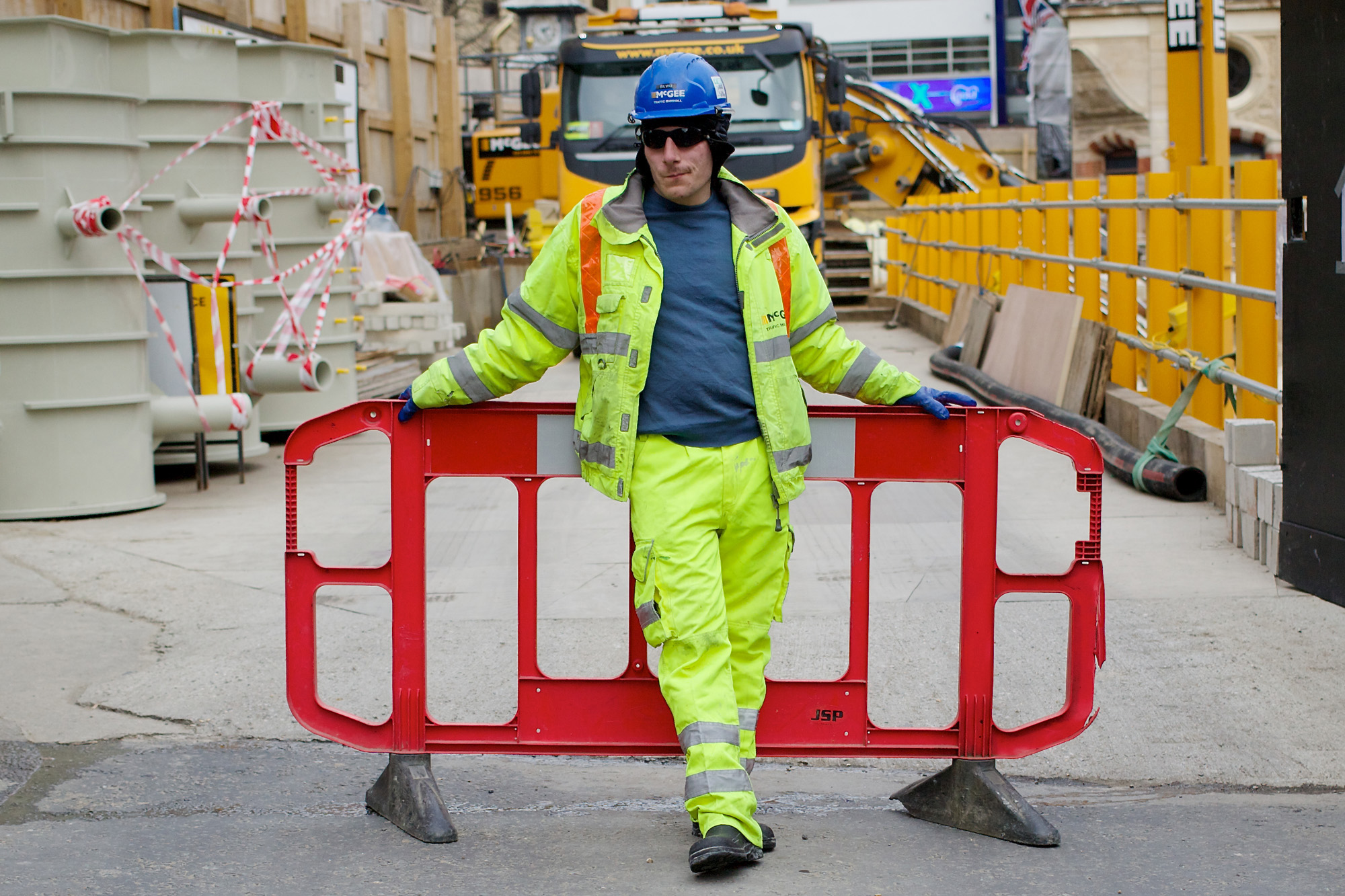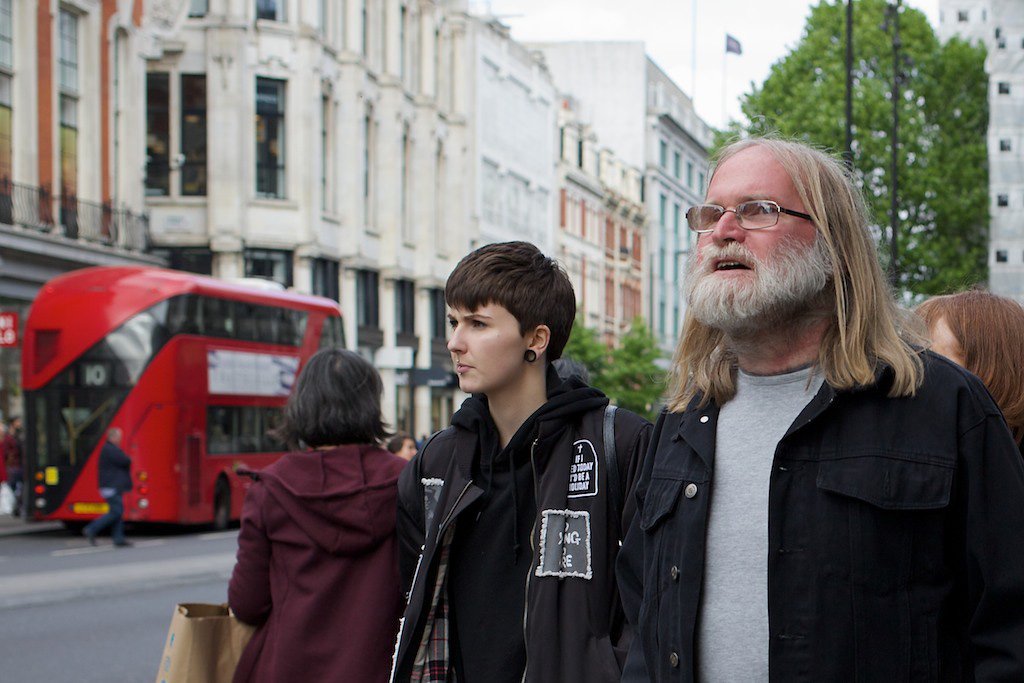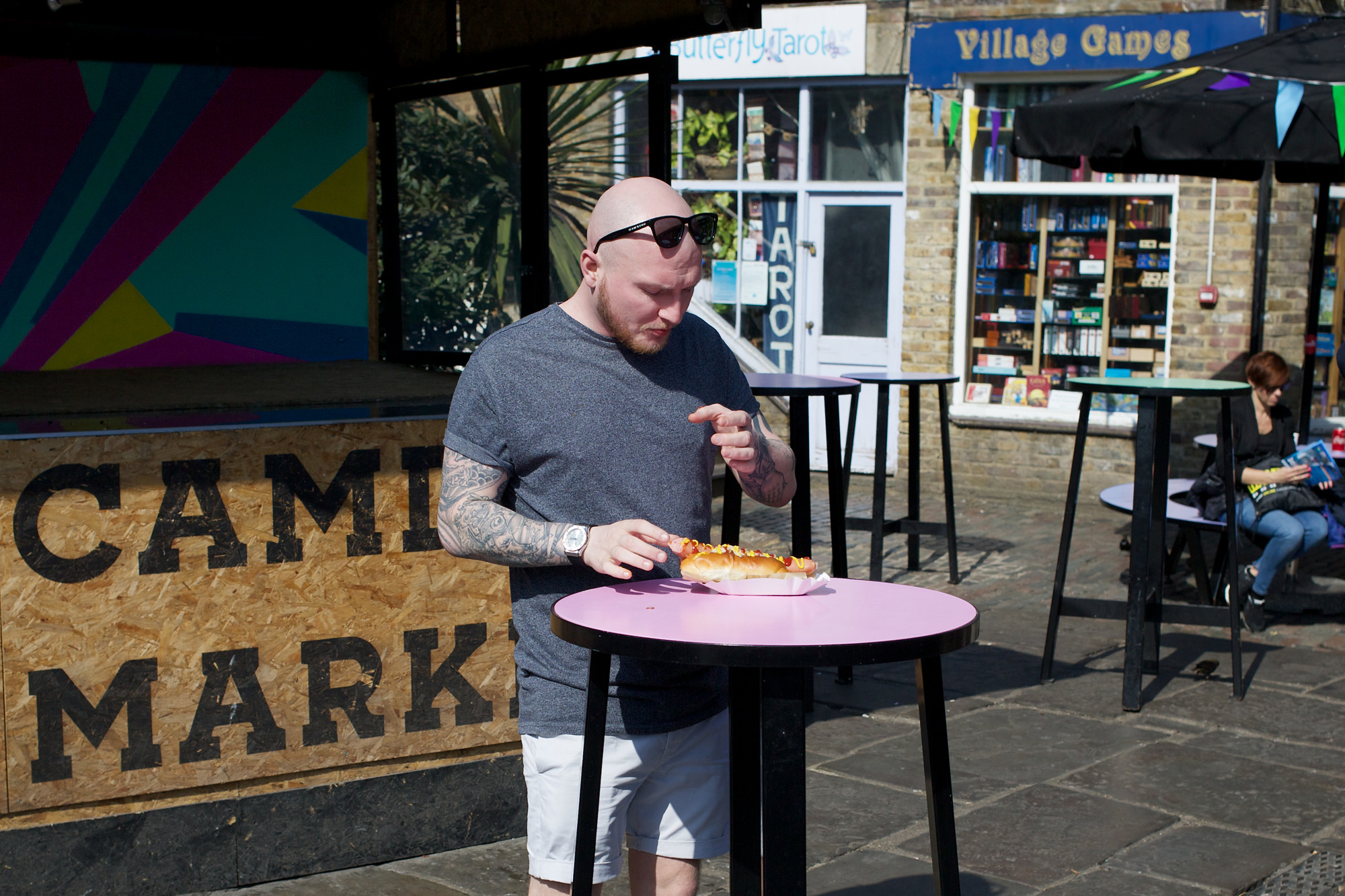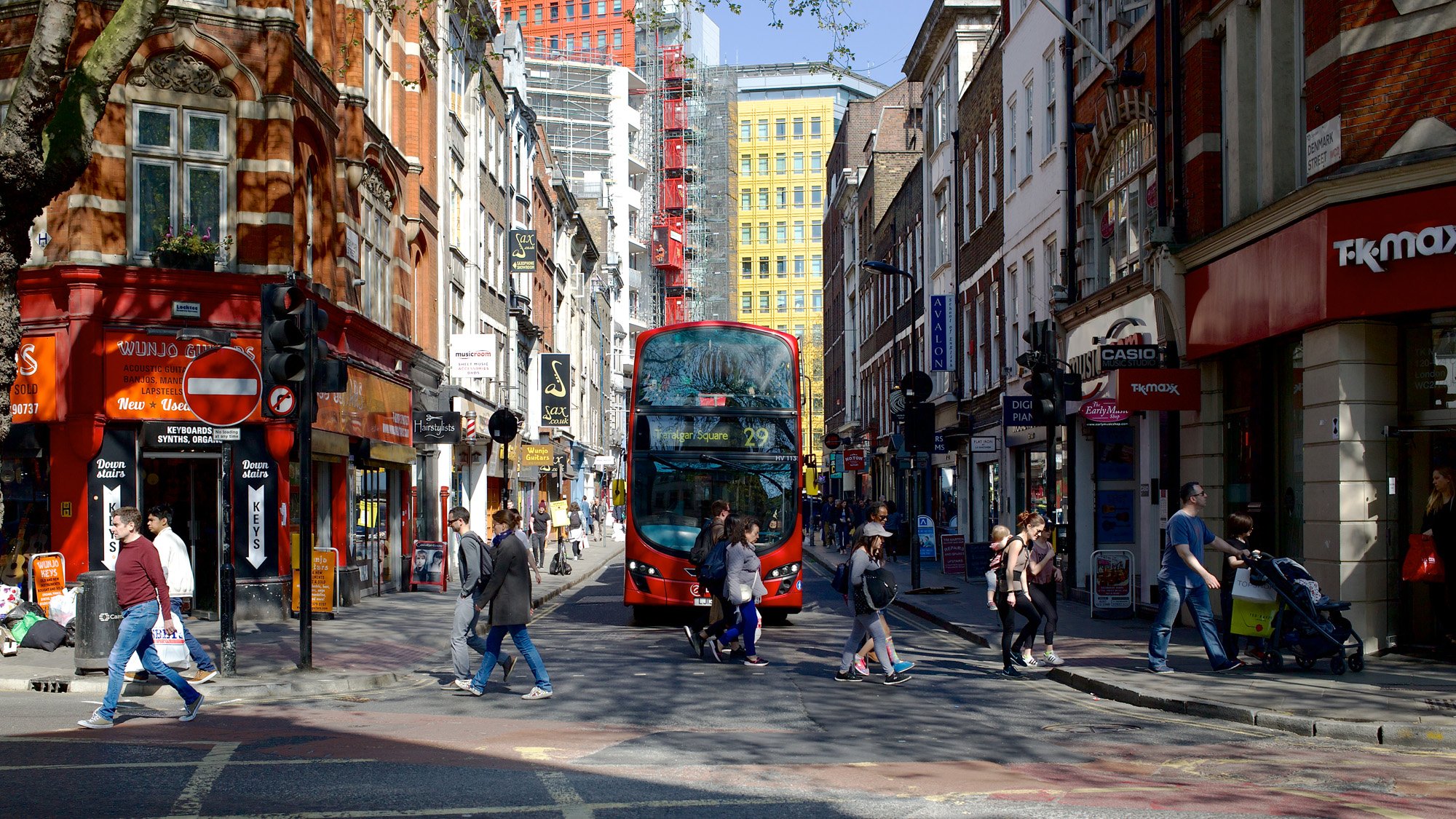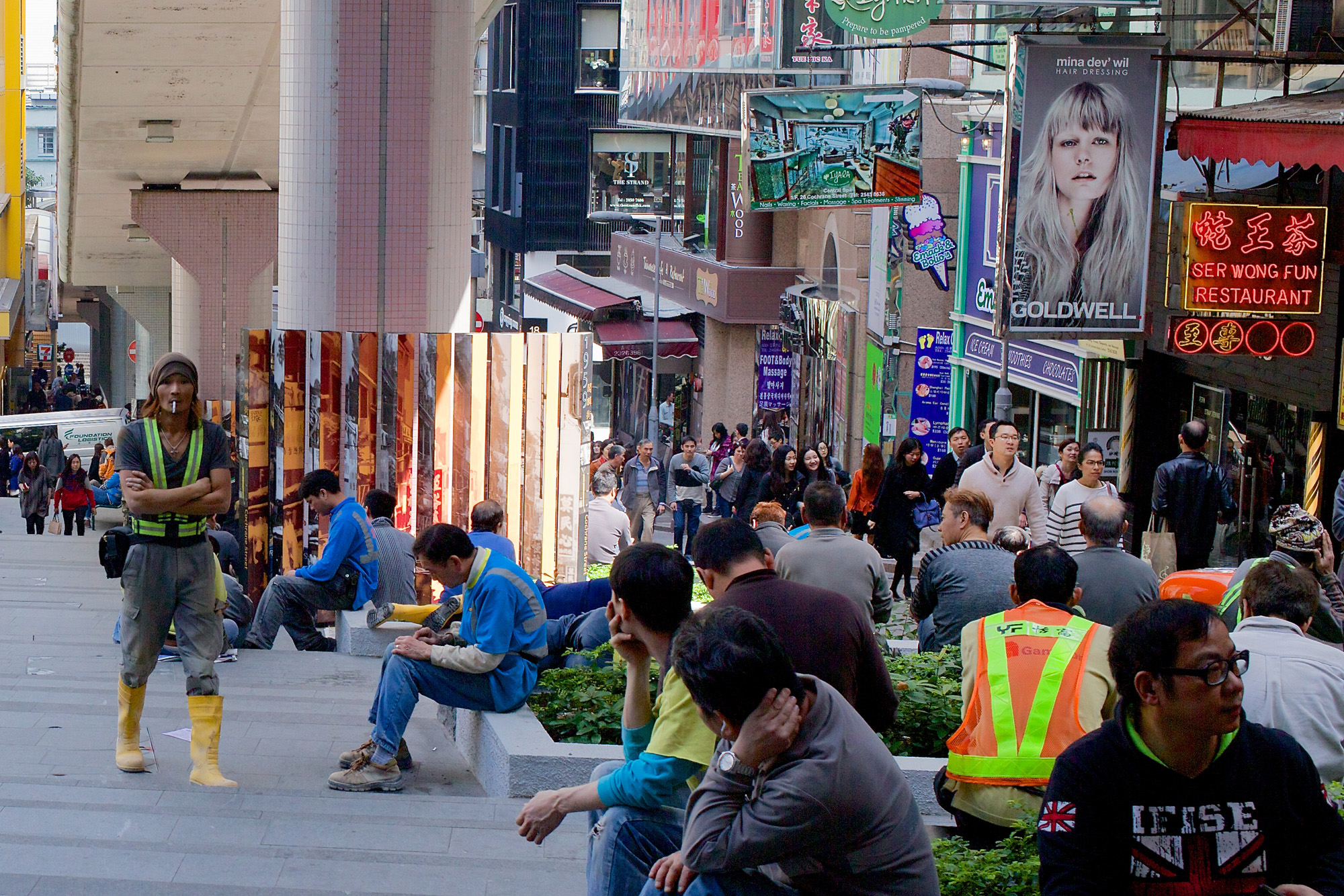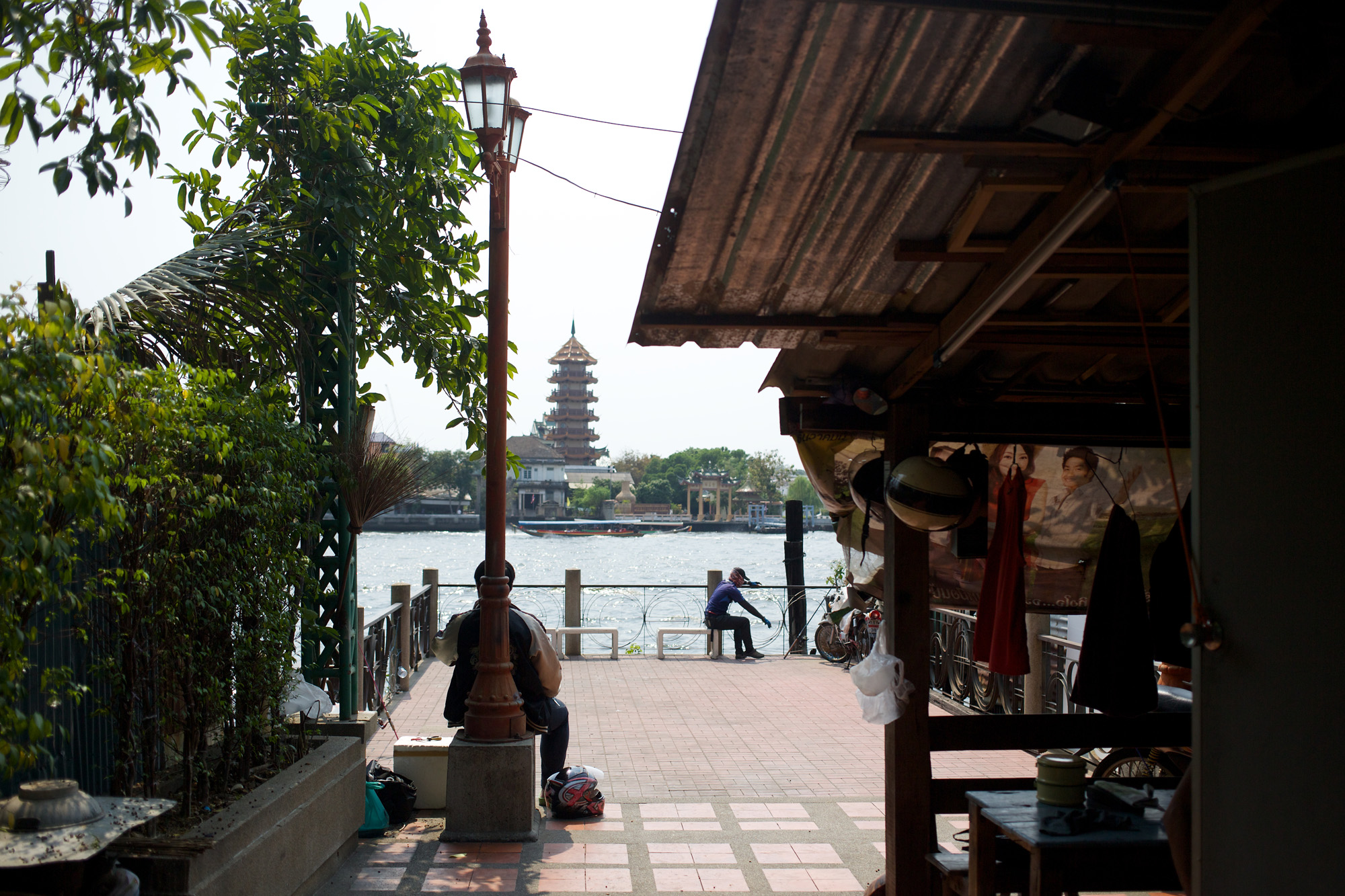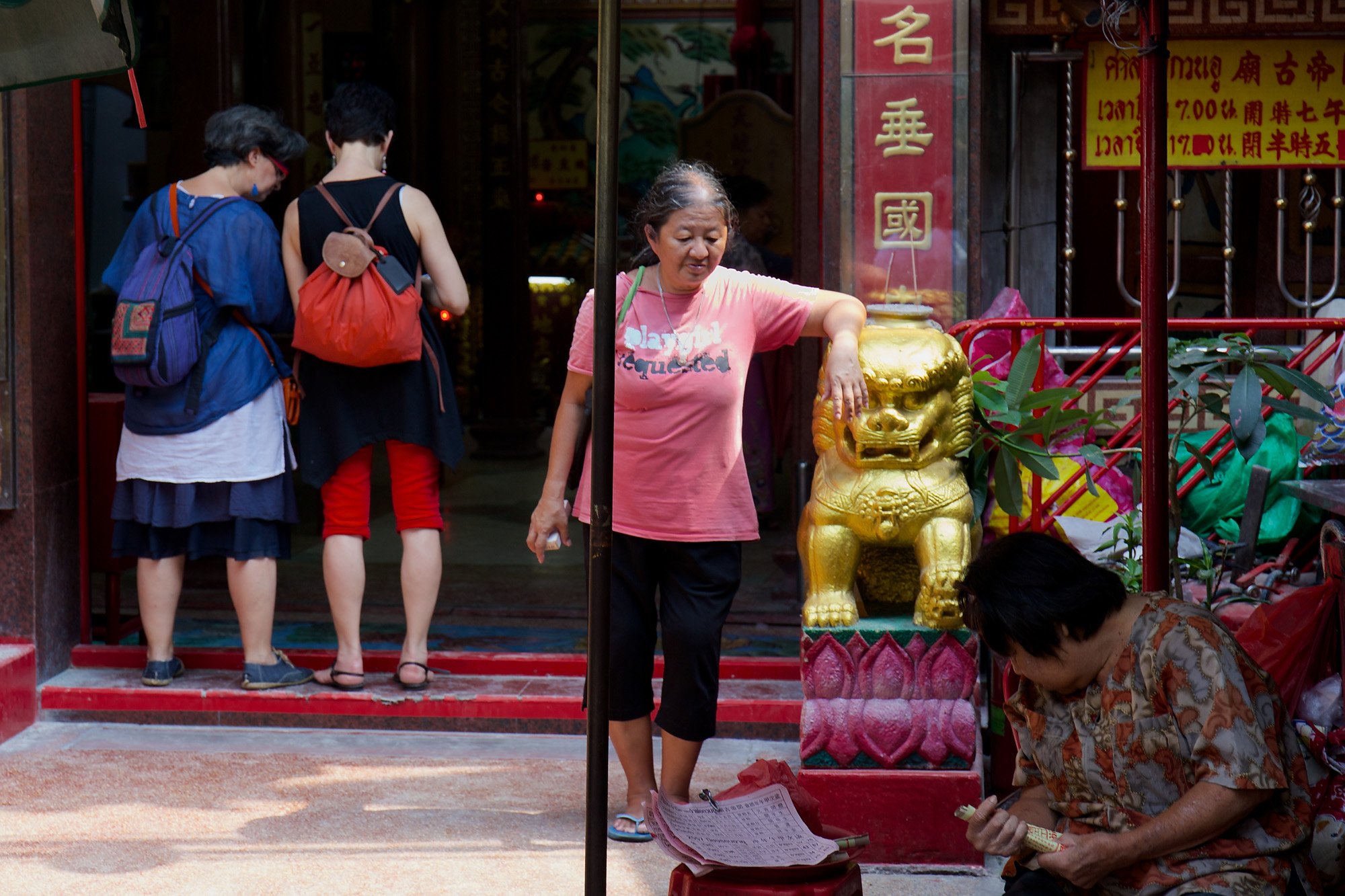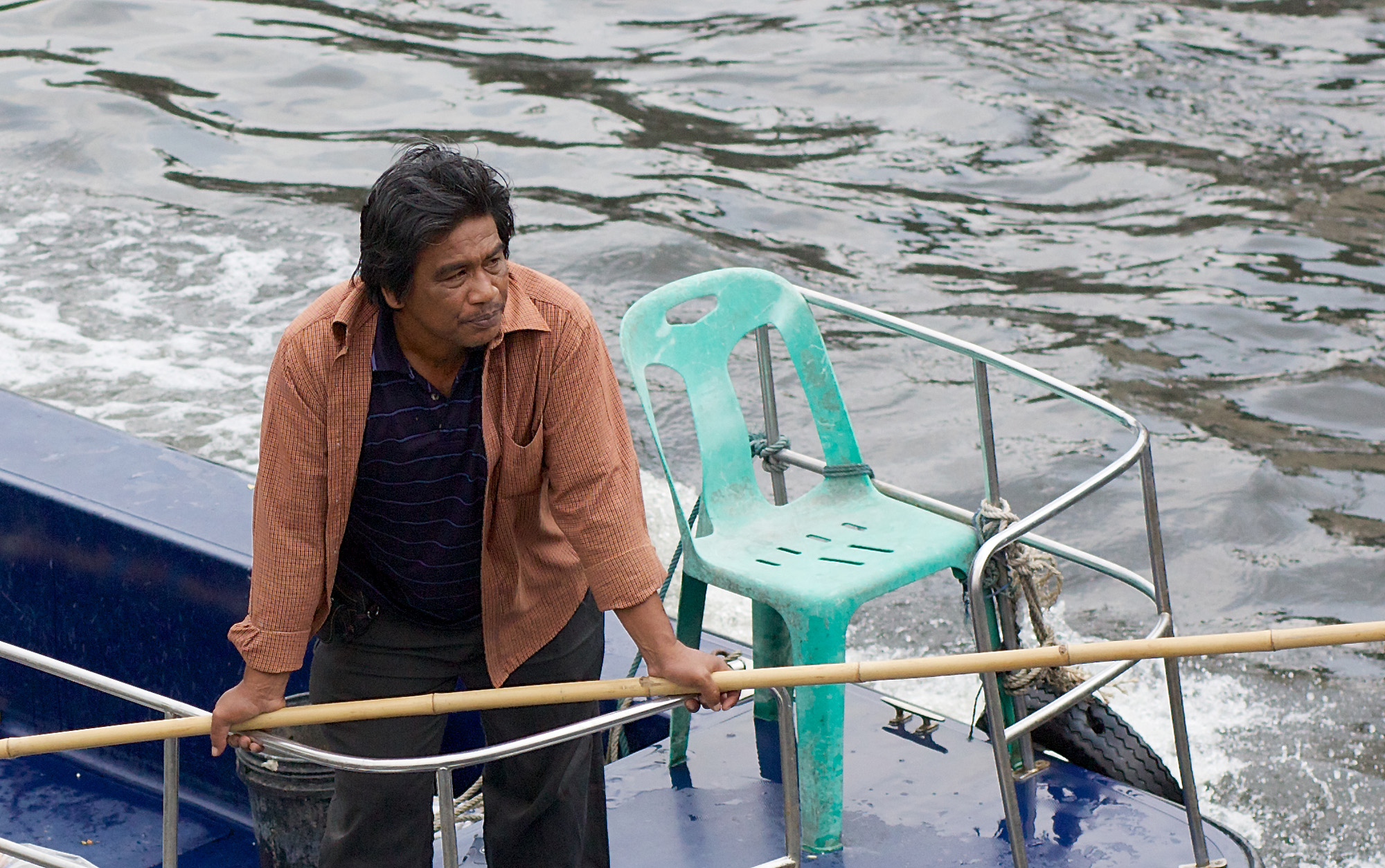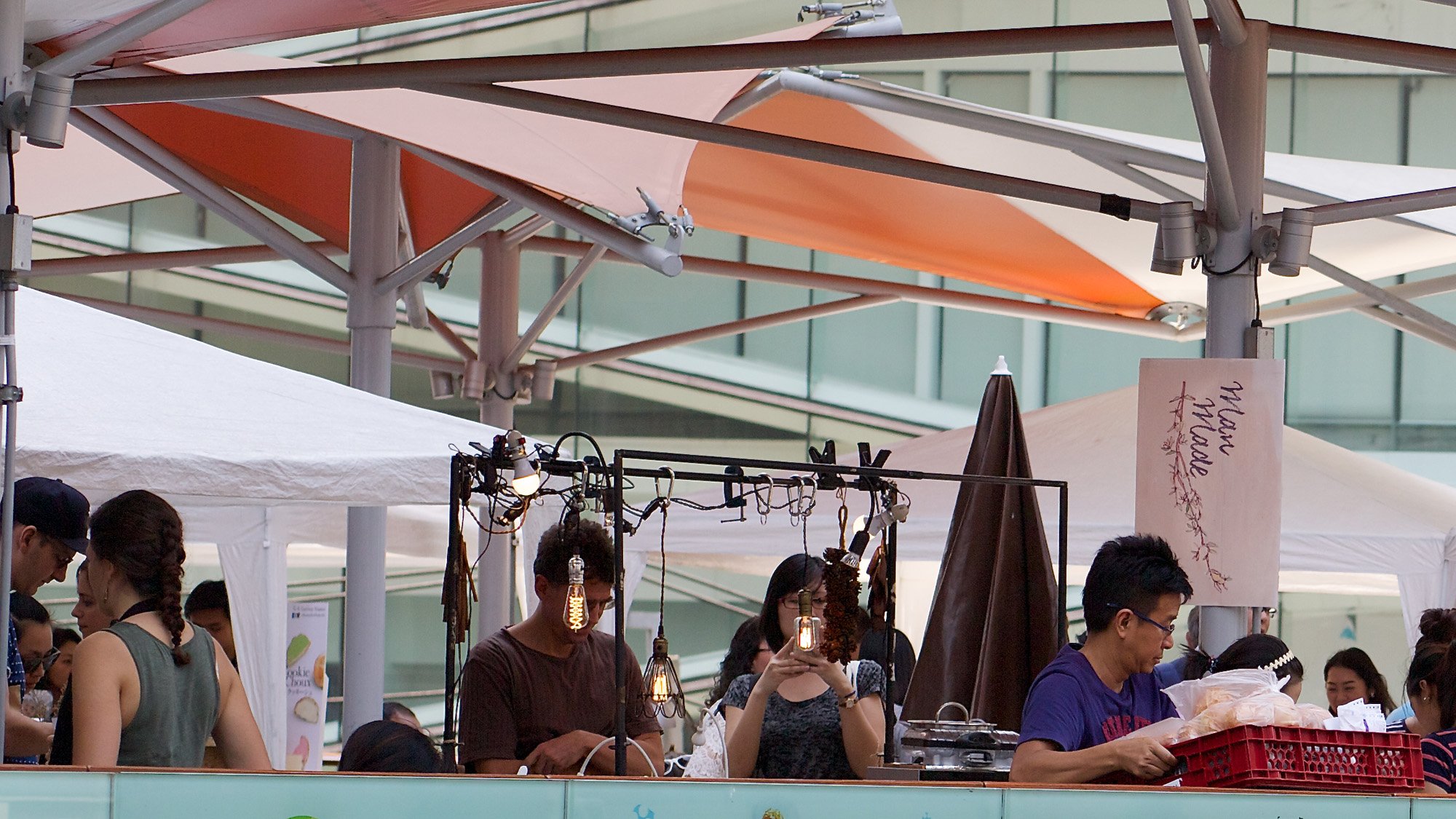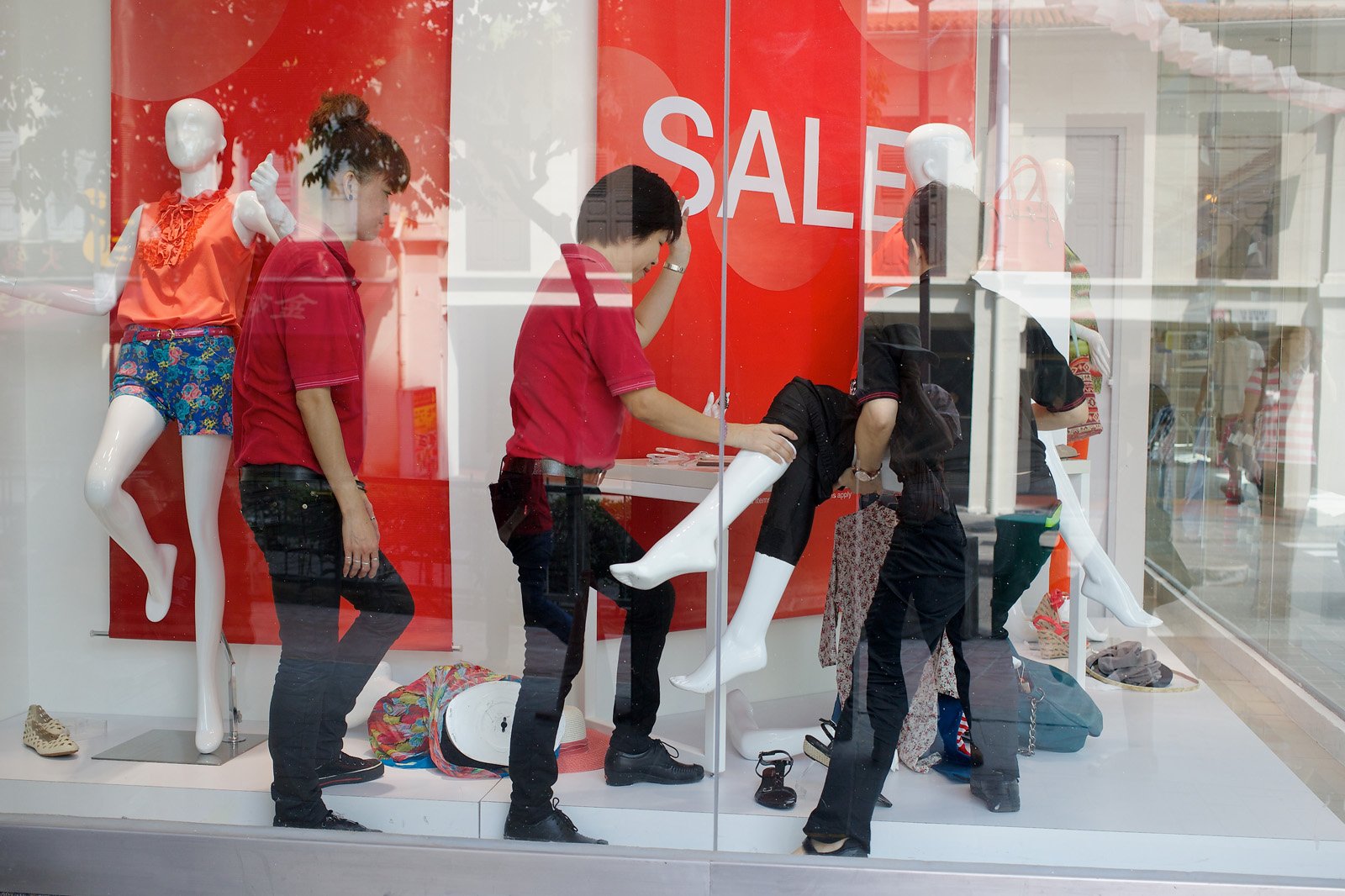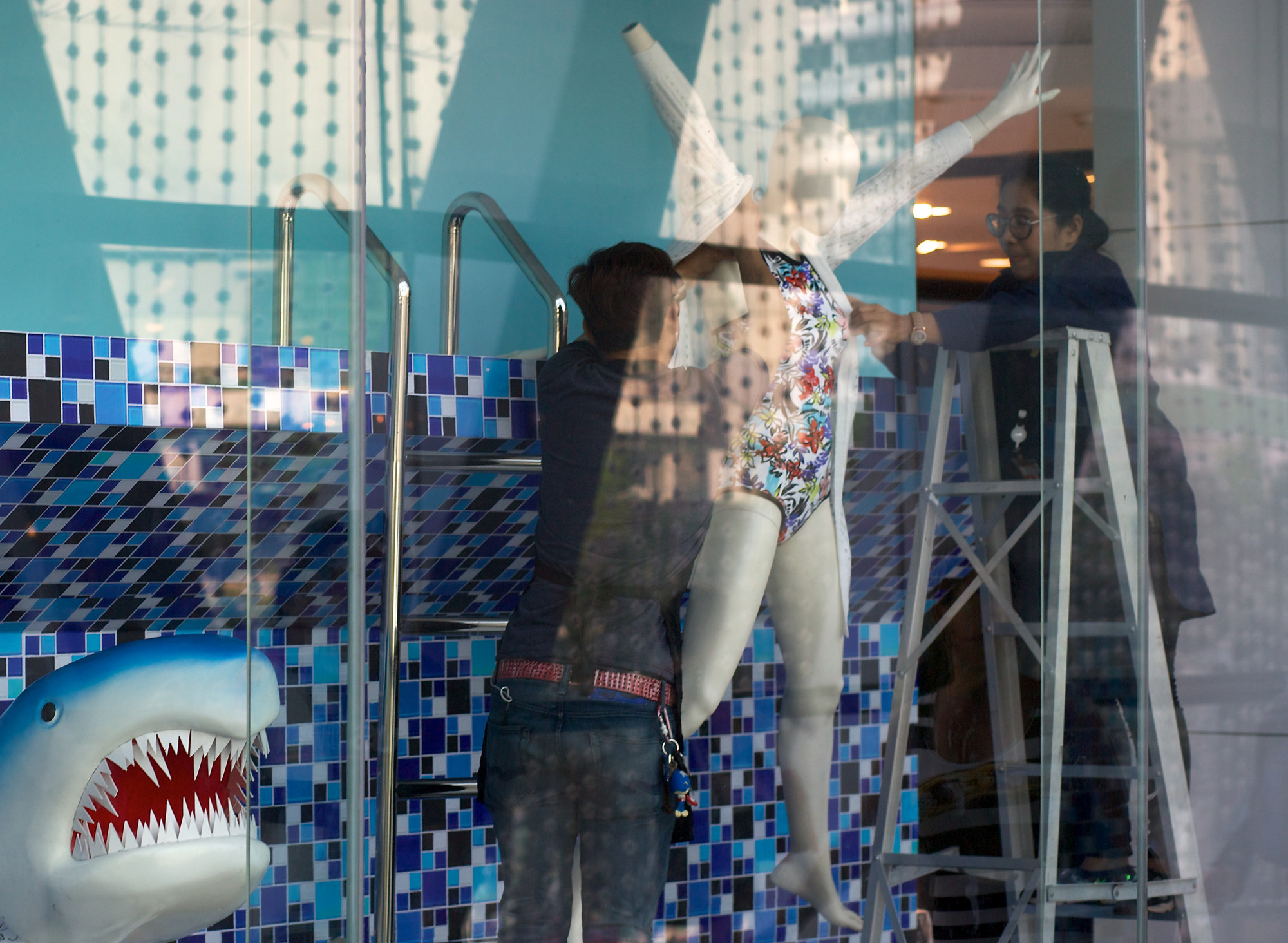I’ve always liked the idea of capturing a street scene in which buildings, cars and people happen to share the same colour. Likewise, I’m attracted to groups of people in the same coloured outfit, but where each person is asserting an individual personality by stance and gesture.
Why do I have this ambition? I guess it’s because I think it will say something, or at the very least will have a measure of artistic unity. A single colour can unify an image that would otherwise be ill-composed.
Yet, I have to confess, I’ve not fully achieved the perfect shot in which there’s a “single colour dominating.” Somewhere in the image another colour always intrudes — and I’m reluctant to stoop to using the hue control in my photo editor to change it.
A Little Garish
The main colour in my featured image (above) is a little garish. Indeed, I think it may even be “out of gamut” — as brilliant orange often is — if I were to make a print. For the uninitiated, “out of gamut” is what happens when you move an image from a large colour space to a smaller one. A typical example is when something in the photo lies outside the colour space of a typical CMYK printer. If you print it, you’ll get only an approximation, not what you see on the screen.
Even though here orange is the prevailing colour, two others signal their presence — the lime green bottle tops and the extraordinary shade of red used for the curved bench.
Name That Colour
Incidentally, while writing this blog I’ve found myself on several occasions attempting to look up the exact names of colours, rather than refer to them vaguely as “red,” “green” or “pink.” If you search Google Images for “colour names” you’ll find lots of useful charts which circulate around the design world. They’ll help you put a name to the colour, as Homer did with his “wine-dark sea.”
On this occasion I’ve looked at a dozen colour charts and cannot find a proper match, not even on the admirable Mental Floss Colour Thesaurus. Maybe this, too, is out of gamut. It seems to be a shade somewhere between Yahoo! Red and Flickr Pink.
Unless you photograph in black and white it’s a good thing to think frequently about colour — and even to fuss over it occasionally. Ask yourself: Can I live with a discordant mixture of colours, or do I want everything in the image to blend harmoniously together?
I think I get away with the glaring colour clashes in my image of the sales assistants on their drinks break. The one in “maximum orange” (No.10) is clearly the dominant figure. She’s the only one standing up — and among all of them is wearing the highest heels and seems to be confronting one of the others. The reddish-pink bench points towards her; and my own reflection — thankfully — is not too obvious as I was wearing my favourite blue shirt that day.
Vying for Dominance
Like people in the workplace, colours vie with each other for dominance. In my next image (below) blue and black vie for dominance, with green hovering in the background, calming them down and bringing them together. Taken from above (at the Thonglor Skytrain station in Bangkok) the image is skewed so the gardeners and the flags can fill the frame completely.
In the skewed image I’ve deliberately downplayed the individuality of the figures by hiding their faces. Yet their physicality is very much in evidence. Just by looking at them in the photo you can feel the action of using a stiff broom on concrete, or clipping the grass with the shears. In this sense, the picture is all about the “Sensation of Living,” as proclaimed by the banners for a nearby condo development (although I doubt if the new occupants will be clipping their own grass).
Green doesn’t always have to be a background colour. When there’s a surfeit of it you can make it the dominant theme of the image, as I do in the picture below.
Of all the colours I find green to be the most difficult to use in a photograph. It may even be one of the reasons why I turned away from landscape photography in favour of the non-green streets.
Search for “lawns” in Google Images and not a single photo looks wholly satisfactory. There are so many different shades of grass, all of which vary in their appearance according to the light, that I don’t trust any of them to look truthful to reality.
Contrasting Notes
In the image below, the studio doorway, the foliage and the little boy’s tee-shirt are all of varying shades of green. There seems to be a gigantic painting in the background, filled with blue, abstract shapes. Yet apart from white, there are only a couple of strongly contrasting “notes” — the red flower and the studio’s red telephone number in the top right corner.
Contrasting notes of colour are helpful in alleviating the sameness of an image where a single colour dominates. Red is the exact opposite of green and always strikes a cheerful note — like a Ferrari speeding through the forest on the race track at Nürburgring.
You can see why I’m not entirely happy with the “dominant colour” style of street photography, even though it still seems like a good idea. Maybe our eyes are not yet ready for it.
Although we’re fully accustomed to viewing black and white photography where colour is notable by its absence, we don’t respond well to monochrome images that are not colour-neutral. I’ve created many artworks using monochrome but I’ve always relied on alternating two contrasting or complementary monochrome hues to make the pictures work.
Meanwhile, I continue to keep a lookout for the perfect shot in which a single colour dominates. It’s out there, somewhere.

